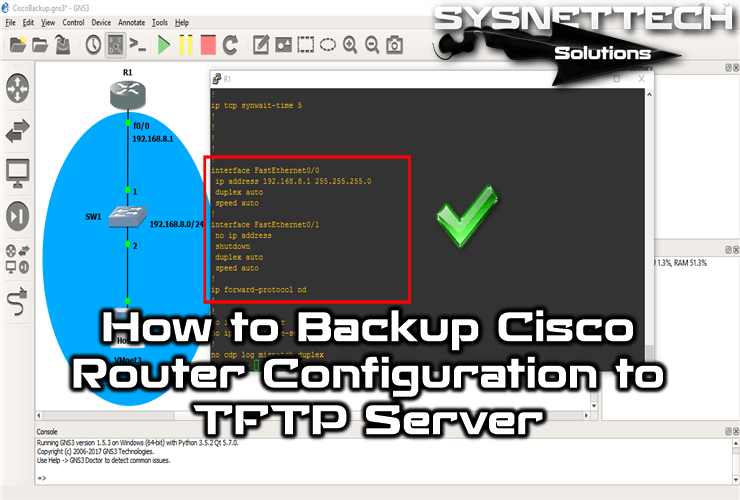

Cisco IOS configuration files such as startup-config or running-config must be archived.

It also provide information regarding backup, restore or copy Cisco Router Configuration via TFTP to Flash USB using different techniques. This section explains the file systems on routers and switches. The copy tftp running-config command merges a backup configuration with the currently active running configuration in RAM.Backup & Restore Cisco Router Configurations VIA TFTP to Flash USB This should always be done after making changes to the router so that the changes are saved when the router is rebooted. This command creates the configuration file that will be used as the startup configuration at reboot. The copy running-config startup-config command copies the active or running configuration from RAM to NVRAM. The copy running-config tftp command is used to copy the active or running configuration file from RAM to a TFTP server. The copy flash tftp command is used to copy an IOS image from the router to a TFTP server. – Verify the flash for the copied new image on Router B with the show flash command. – Copy the image from Router A to Router B using the copy tftp flash command. There can be multiple entries for multiple images. Use the tftp-server flash filename1 command to define the path to system image that needs to transferred. – Configure Router A as the TFTP server using the configure terminal command. – Check the image size on both of the routers with the show flash command to verify that enough space exists on Router B. – Verify the connectivity between Router A and Router B using the ping command. The following example illustrates the steps to copy an image from Router A to Router B: One router can act as a TFTP server to the other in this process. The copy tftp flash command enables a router to copy an IOS image (the router operating system) to a router from a TFTP server.


 0 kommentar(er)
0 kommentar(er)
